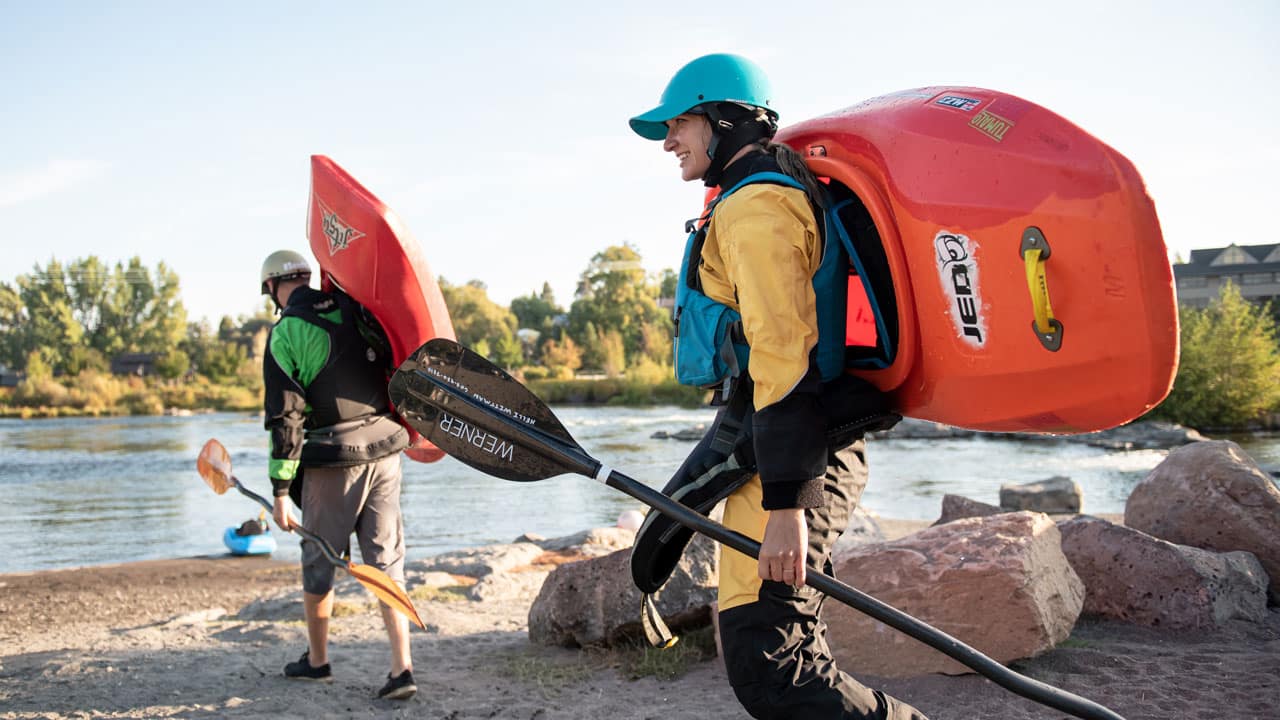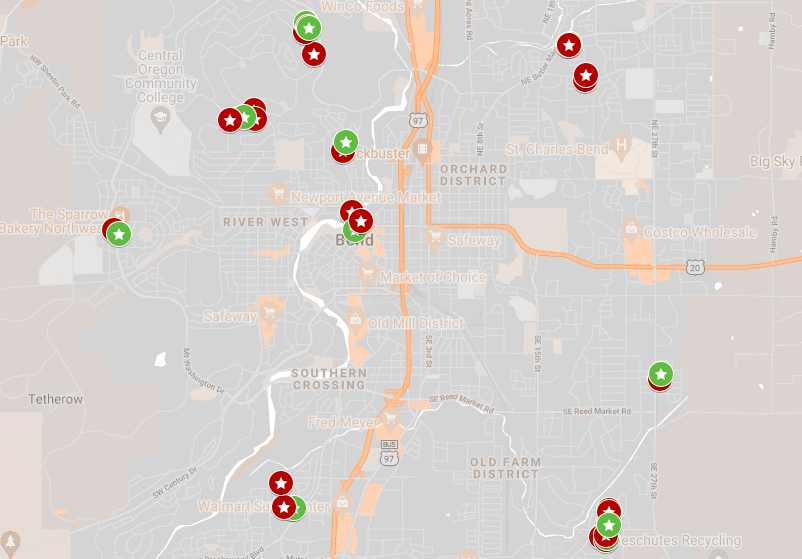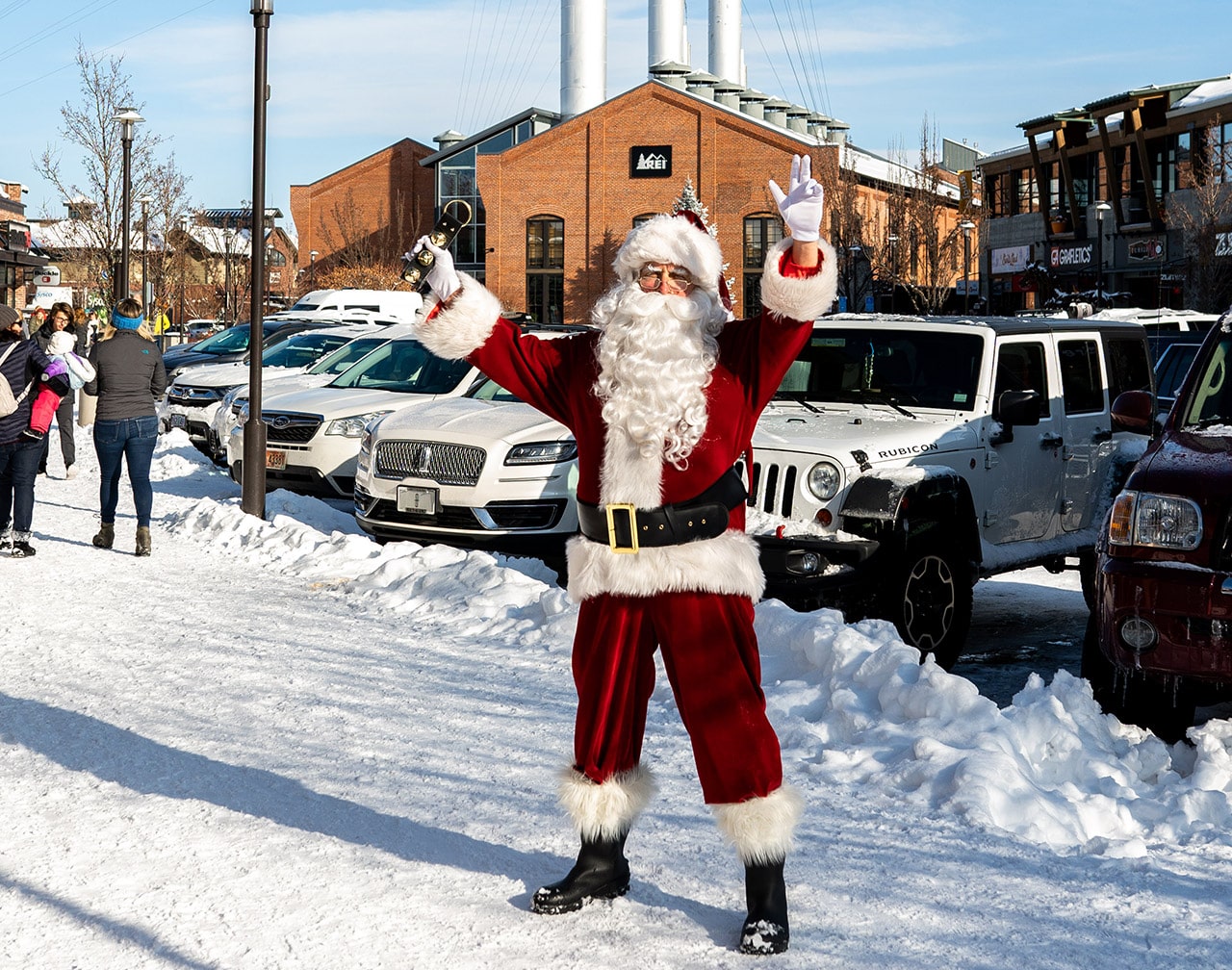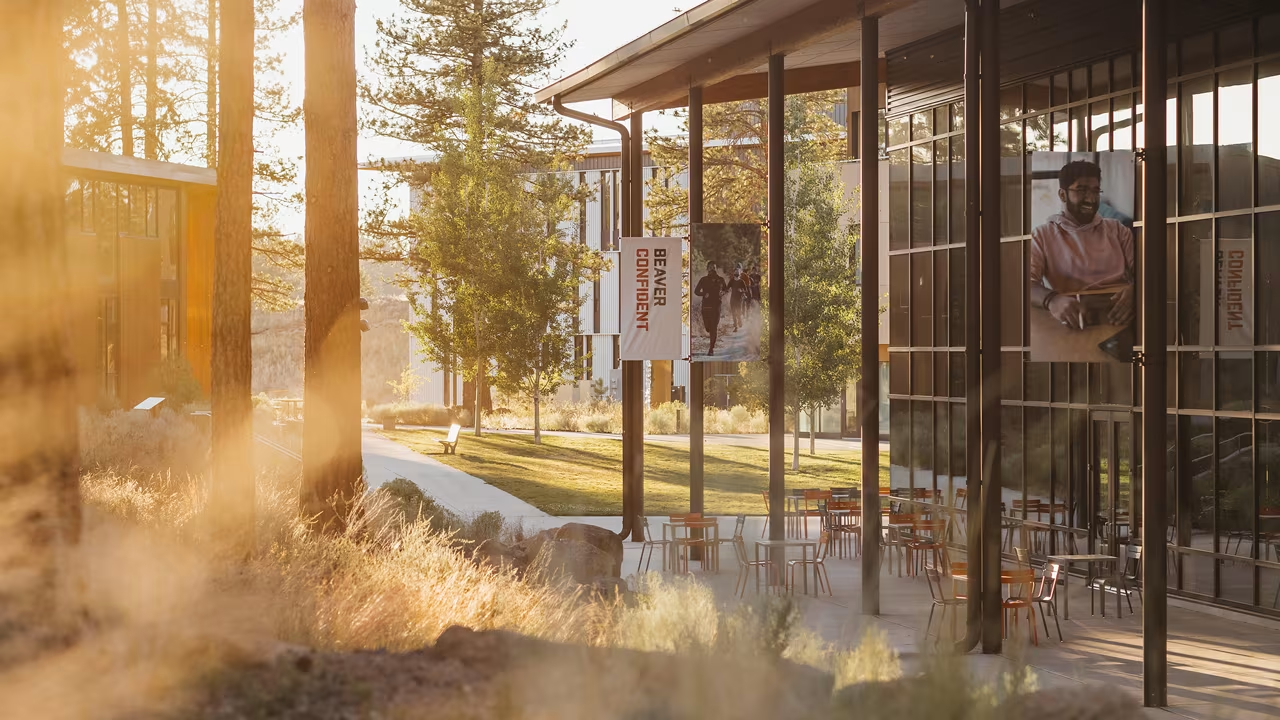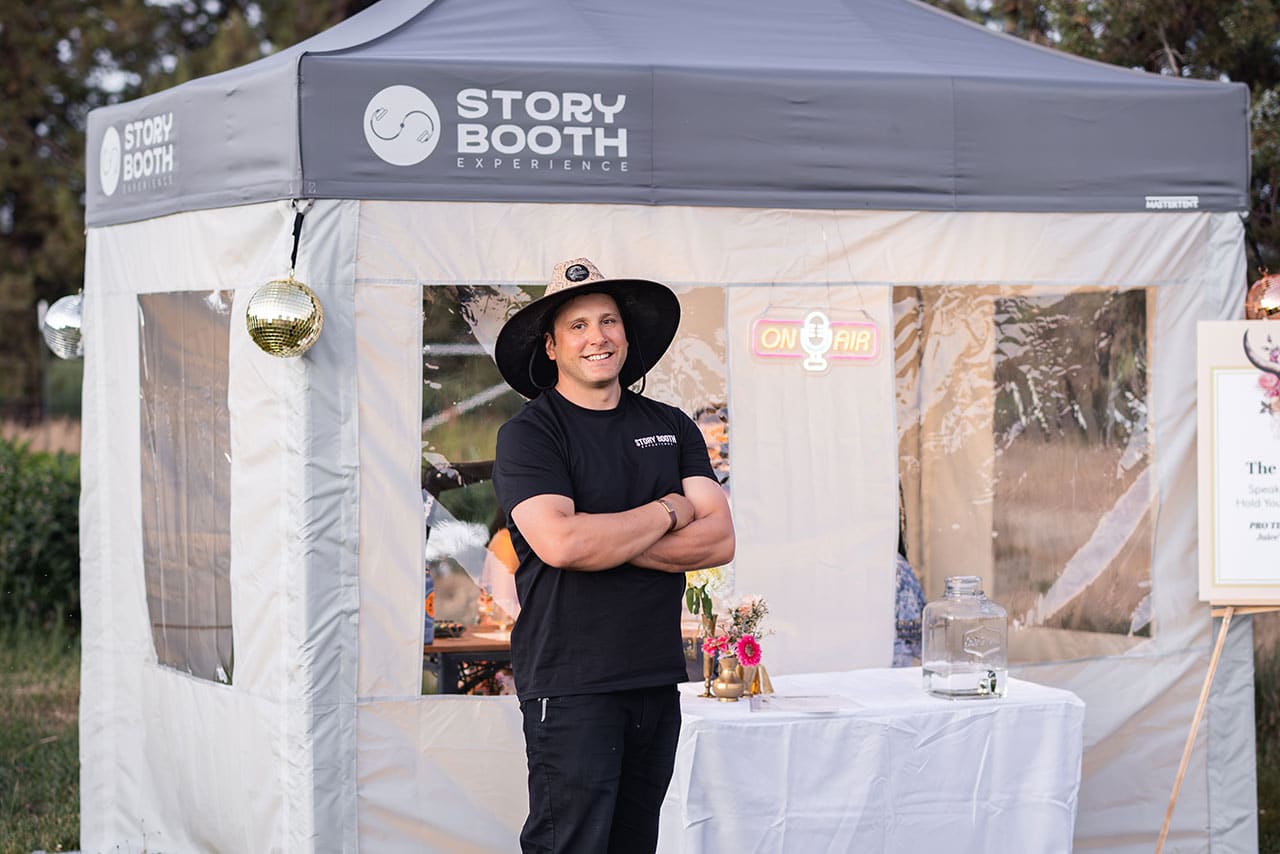It’s hard to miss the beauty of the Deschutes River as it meanders through downtown, as a centerpiece of the city. Those who are lucky enough to live here or visit here have the Bend Paddle Trail Alliance (BPTA) to thank for helping sustain its beauty, while also creating unprecedented access. Photo above by Regina Nicolardi.
One of the founding board members of Bend Paddle Trail Alliance, Karl Koenig, age 76, recalls a grittier time when it was prohibited to recreate in the Deschutes River due to logging and mill operations, wastewater contaminants and their toxic over blooms, which gave the town of a Bend a “not so pleasant smell.”
“We’ve come a long way,” said Koenig, who, with his wife, JoAnn Weber-Koenig, has surveyed the Bend Paddle Trail Alliance’s more than 100 miles of accessible waterways from the Deschutes River to the many Central Oregon lakes. “We started out as a bunch of smelly boaters, then we got ourselves organized to become Bend Paddle Trail Alliance, which spawned The Deschutes Paddle Trail, to what you see today,” he said.
The mission of the Bend Paddle Trail Alliance is to promote and establish a navigable paddle trail within Deschutes County that enhances river and lake recreation.
A Path and Collaboration to Create Bend Whitewater Park
By all accounts, BPTA co-founders Geoff Frank and Jayson Bowerman, were the most passionate about making improvements to the local waterways, but their ultimate dream was to make the Bend Whitewater Park a reality.
“We heard ‘no’ for a solid decade,” said Frank, owner of Tumalo Creek Kayak & Canoe, who never stopped believing it could work. “We organized, raised money and were persistent as heck.”
Part of that persistence was convincing Bend Park & Recreation District (BPRD) to join forces with them in 2012 and get a $29 million dollar state bond passed to make major improvements to the Colorado Dam to not only make it safer for floaters and rafters, but to also create a year-round whitewater park for surfers and kayakers.
“At the time, it was the biggest public and private partnership in the county, and BPTA contributed $1.13 million to the project, or 12% of the cost,” said Frank, who recently stepped down from the BPTA board after more than a dozen years.
Fatalities and serious accidents at the Colorado Dam had also created public outcry to make that part of the river safer, as people were already floating the river in droves by 2006. Back then, floaters had to navigate getting out of the river before the threat of drifting into the dangerous dam spillway area, then scramble along the road with their flotation devices to get back into the river and continue their float to Drake Park.
By 2015, the Whitewater Park was completed with several channels: surfing and kayaking waves with four different levels, a safe channel for floaters that allows for a continuous paddle trail and also includes a fish ladder, and a channel that protects the natural habitat in the area. Bend Park & Recreation District’s Community Relations Manager, Julie Brown said the partnership with BPTA surpassed their expectations on every measure.
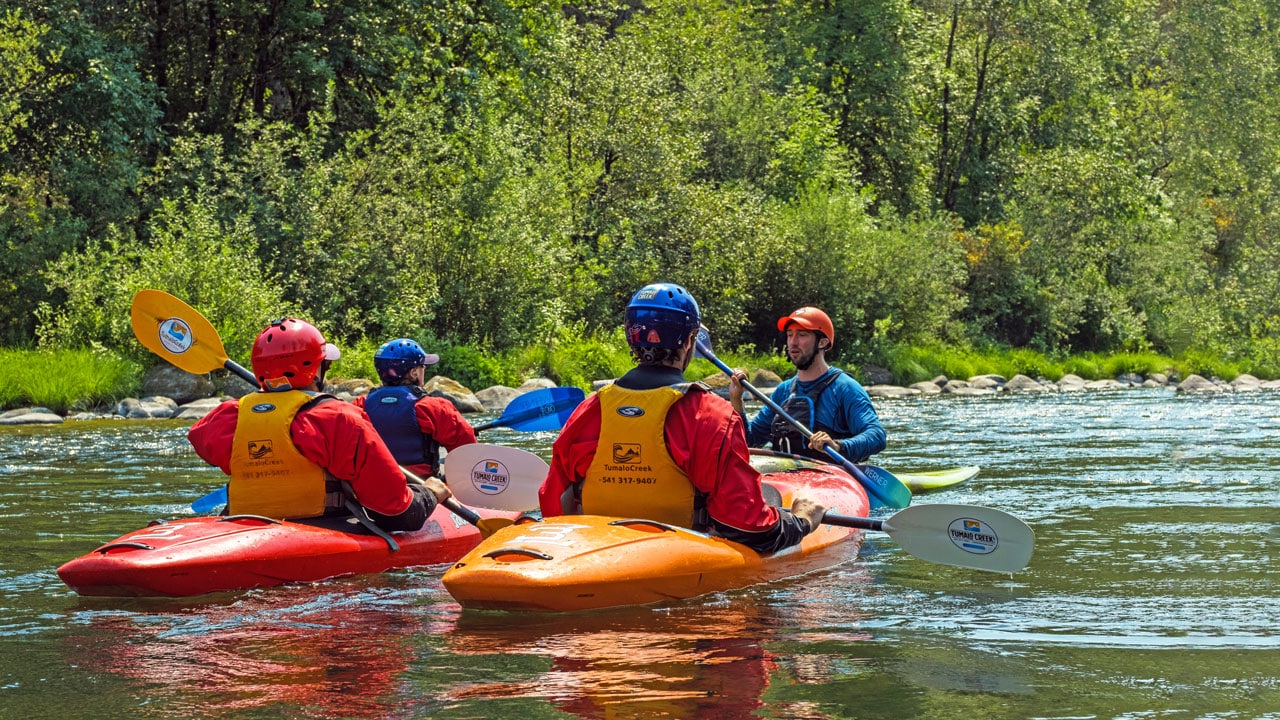
Mapping the River
While the downtown stretch of the Deschutes River may be the most popular and accessible, Koenig said the abundance of waterway miles in the surrounding areas are also worth considering, because there are stretches of river or lake suited for every recreationist. “We created Bend Paddle Trail maps in conjunction with many park districts and the U.S. Forest Service,” he said.
Koenig was instrumental in getting the BPTA maps created along with the map signage along the river and lakes. “The most important part of the maps is to educate what is on that stretch of river; for example, you don’t want tubers to go into an area of class IV rapids, where only experienced whitewater kayakers should go. Our maps highlight what’s coming up in the next couple of miles and where a person can take out and put in.”
After seeing BPTA’s dream become a reality, co-founder Geoff Frank says the biggest milestone for him is witnessing the happy faces coming off the river.
“Well, I’ve kind of become a bus driver now. I help with the floater’s shuttles from Drake Park,” he said with a laugh, “But really I love hearing the visitors from all over the country enjoying the river and listening to them rave about it. It’s pretty cool that families can have access to this river that belongs to all of us.”

